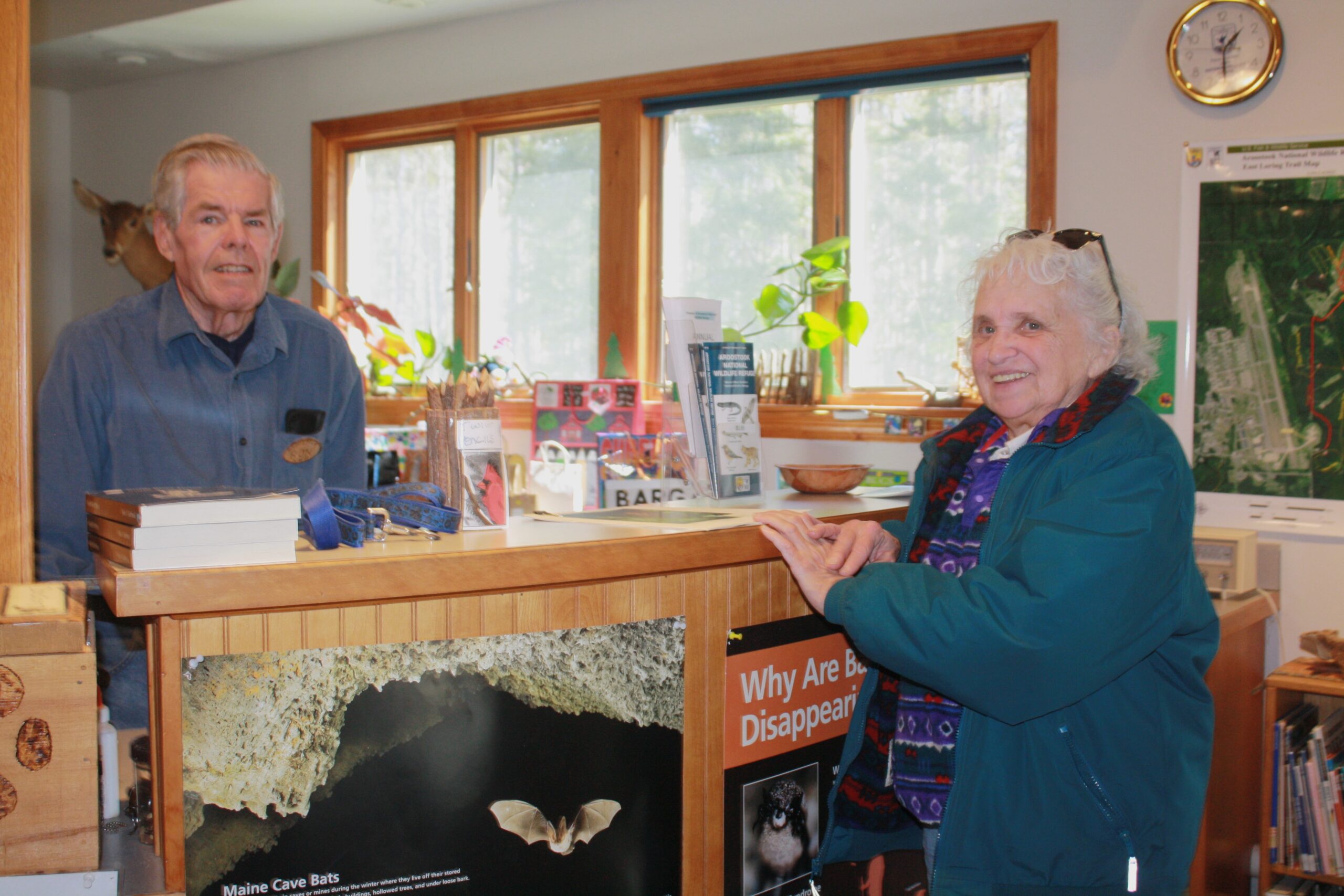
LIMESTONE, Maine – Lack of federal funding has reduced the resources needed to maintain Aroostook County’s only designated wildlife refuge to the point where local volunteers are working to keep its trails and gift shop open.
After Loring Air Force Base closed in 1994, the U.S. Air Force transferred 4,700 acres to the U.S. Fish and Wildlife Service, creating the Aroostook National Wildlife Refuge in 1998. Today, the refuge consists of 5,252 acres in four divisions located within the former Loring base, Caswell, Caribou and Connor Township.
The refuge has nearly 13 miles of walking trails but it is primarily an oasis for over 500 native and migratory species of mammals, birds, plants and fish.
The National Wildlife Refuge System’s 2024 allocation from the federal government to maintain 590 refuges is $527 million, compared to $503 million in 2010, an increase that hasn’t kept up with the rate of inflation. Meager budget increases, without inflation adjustments, since 2011 have led to over 800 staff positions being cut.
Though the National Wildlife Refuge System has added 21 new refuges and visitors have grown by 46 percent to 68 million people per year since 2011, no refuge has a full staff, according to the National Wildlife Refuge Association, a Washington D.C.-based advocacy group.
The latest federal budget data shows that The Northern Maine National Wildlife Refuge Complex and Maine Coastal Islands National Wildlife Refuge Complex were allocated a combined $600,000 in 2024, compared with $564,939 in 2023 and $561,771 in 2022.
That means Aroostook’s refuge, part of the Northern Maine Complex, has no full-time local staff, and has not had an on-site manager since 2017.
“The Northern Maine Complex has lost 75 percent of our staff in the last 13 years,” said John Magera, project leader for the Northern Maine National Wildlife Complex. “We just have four people now – a manager [Magera], a biologist, a maintenance person and an administrative assistant – to cover an area the size of Maryland.”

Northern Maine’s territory includes the Aroostook refuge, the 30,000-acre Moosehorn National Wildlife Refuge in Baring Plantation, the 11,435-acre Sunkhaze Meadows National Wildlife Refuge in Milford and the 1,068-acre Carlton Pond Waterfowl Production Area in Troy.
Budget cuts have made certain services less readily available at Aroostook’s refuge. With most wilderness law enforcement for the refuge complex based in central Maine, Aroostook’s refuge is barely covered, leading to more vandalism, Magera said. He and staff are also behind on wildlife inventories there because they rely on one biologist.
Magera typically visits the Aroostook refuge once a month but his vast coverage area makes regular management there impossible. He and colleagues are based at Moosehorn and often find themselves prioritizing refuge maintenance closer to home.
“We do the best we can, but we have a community near Moosehorn that expects to have trails open and taken care of and signs posted,” Magera said. “It’s a broad responsibility for just a few of us.”
If it weren’t for Friends of Aroostook National Wildlife Refuge, Magera said that the Aroostook refuge’s trails likely would not be open to the public.
The nonprofit Friends group has 84 members who pay $15 in annual dues to support maintenance work and programs at Aroostook’s refuge. Seven members serve on the Friends board of directors, and five or six other local members usually attend monthly meetings, said Penny Kern of Presque Isle, the board’s secretary.
Aroostook’s lack of local staff has made the most active Friends volunteers responsible for cleaning and maintaining trails, staffing the gift shop in Limestone every weekend and organizing monthly visits from school classes and homeschool groups during spring and fall, Kern said.
Full-time staff could help forge even stronger community connections, including with the Mi’kmaq Nation, whose portion of the former Loring base shares a boundary with the Refuge in Limestone, Magera noted.
The Refuge’s biggest need is for more maintenance staff, said Friends board member Wayne Selfridge of Caribou.
Though volunteers use small equipment like mowers to keep all trails groomed and open, they are not allowed to use heavy equipment like backhoes and bulldozers without staff supervision, Selfridge said.
That means the group often has to wait for Northern Maine Complex’s maintenance person to perform larger scale projects, like habitat improvements and removing former Loring infrastructure, unless emergencies arise.
“We do not blame U.S. Fish and Wildlife [for the situation]. They have to make some tough calls with the budgets. They come right up here when we really need them,” Selfridge said. “But there comes a point when we need staff assigned here with management and maintenance knowledge.”
Since not everyone signs the log books at the refuge, there is no exact data on how many people visit the refuge yearly. Selfridge estimates that the complex gets thousands of visitors, including former service members and those who enjoy witnessing undisturbed wildlife firsthand.
The Friends group has had frequent conversations with Maine’s legislators in Washington, including Caribou native Sen. Susan Collins. They hope that more advocacy from legislators at the federal level could lead to increased resources for the refuge.
“Wildlife preservation is always our priority, but with somebody here [on staff], we could do even more for the public,” Selfridge said.







